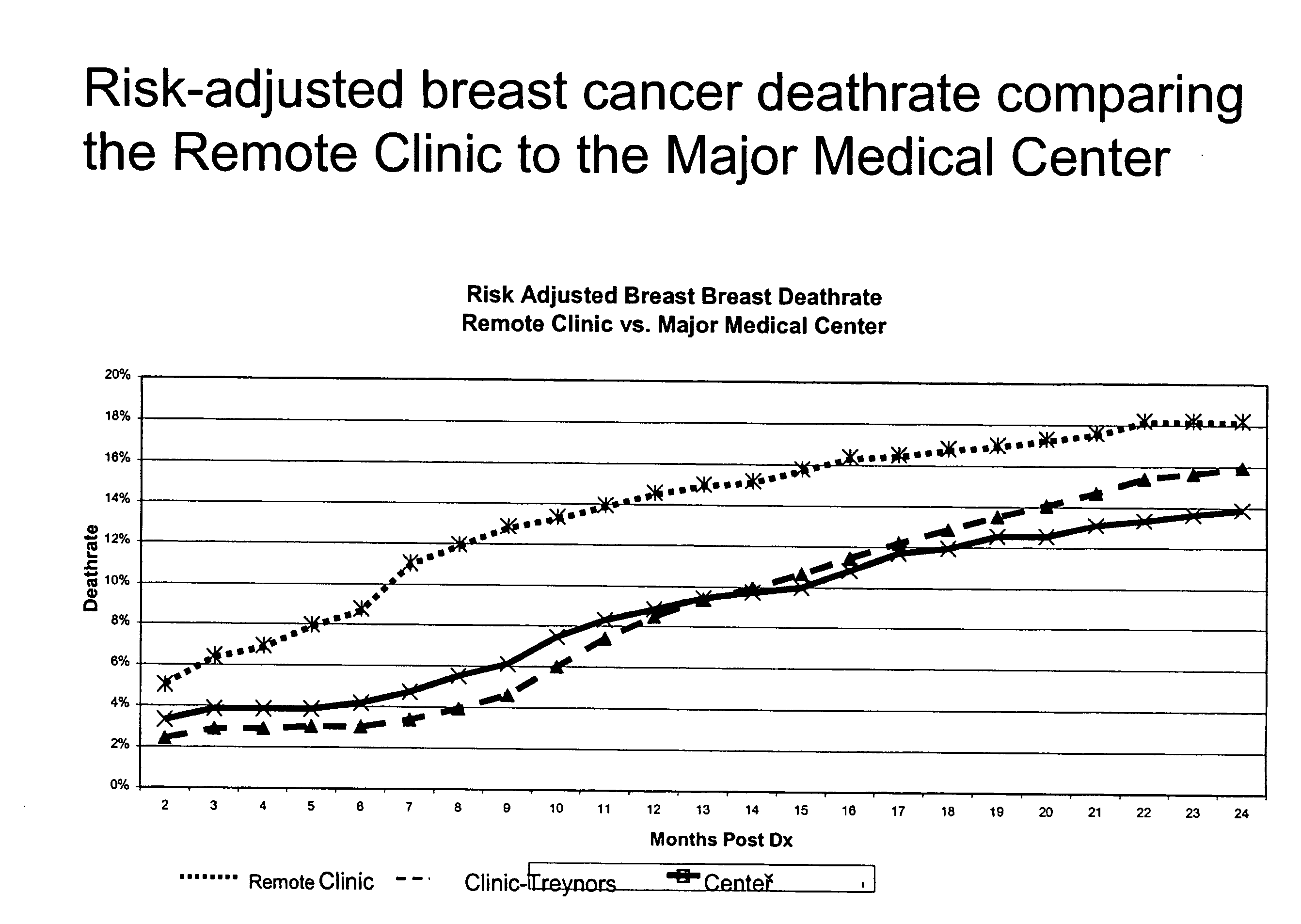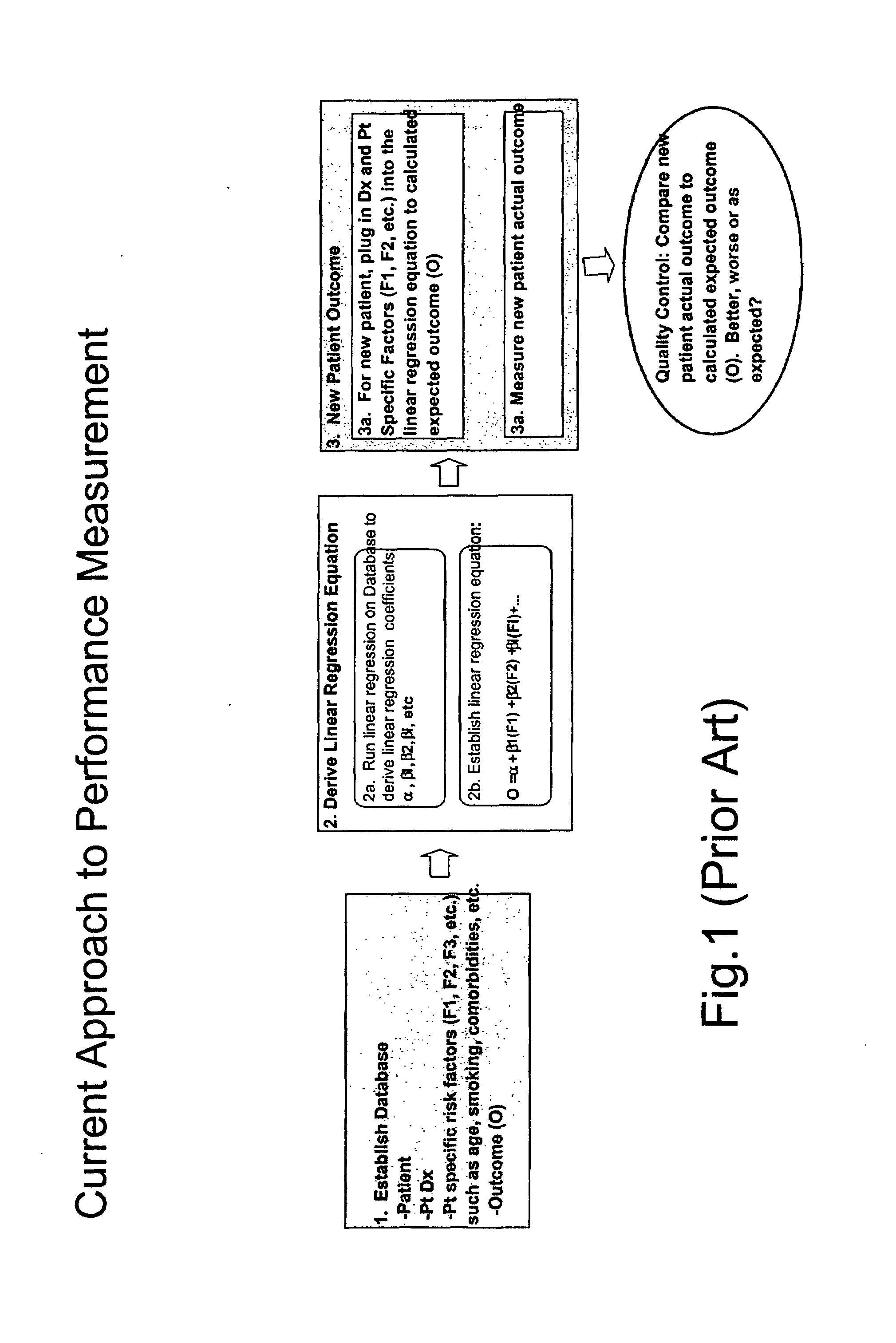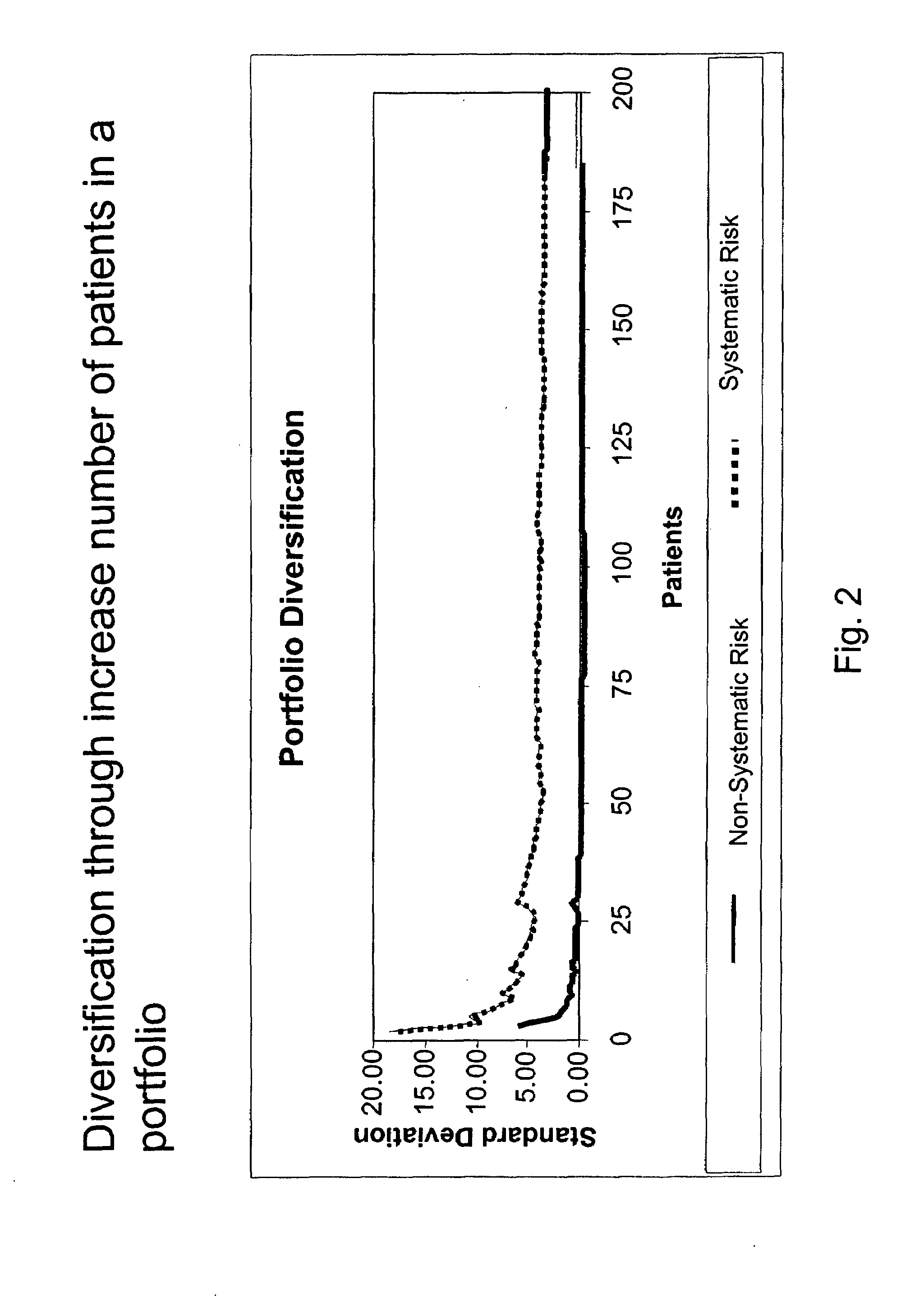Methods for risk-adjusted performance analysis
a risk-adjusted performance and analysis method technology, applied in the field of risk-adjusted performance measurement, can solve the problems of insufficient methods, inadequate measurement of performance and therefore quality of care, and difficulty in providing a comparison, and therefore a performance evaluation, between healthcare groups
- Summary
- Abstract
- Description
- Claims
- Application Information
AI Technical Summary
Benefits of technology
Problems solved by technology
Method used
Image
Examples
example 1
Quality Control of a Hospital System
[0141]The following is a scenario to illustrate an embodiment of this invention. Specific names, times and other identifying information may be changed due to privacy issues.
[0142]Cancer Healthcare System is a major cancer healthcare system consisting of a large major medical center, “Center”, and a smaller clinic located in a different geographical location “Remote Clinic”. Currently, measuring performance of the Remote Clinic is done through review of the financial performance and evaluation of the quality of care at the Remote Clinic and comparing it to the performance of the Center. However, comparing the performance of the Remote Clinic to the Center is problematic because the patient profile (i.e., cancer type and stage) at the Remote Clinic is substantially different than the patient profile at the Center. As a result, comparison of the performance of the Remote Clinic to the Center is difficult.
[0143]Currently, evaluation of quality of car...
example 2
Breast Cancer Treatment Performance
[0159]In the second example, the management from the Center is interested in how well the Remote Clinic is performing in terms of treatment for breast cancer. Specifically, the management from the Center is interested in comparing the breast cancer outcome, in terms of death rate, between the Remote Clinic and the Center.
[0160]FIG. 7 is a graph illustrating the breast cancer death rate between the Remote Clinic and the Major Medical Center over a period of 24 months post diagnosis of the patient's cancer. As depicted in FIG. 7, the Remote Clinic appears to have significantly poorer performance (i.e., higher death rate) in treating breast cancer than the Center. The Center's management is concerned that the physicians at the Remote Clinic may not be following the established guidelines or protocols established at the Center for the treatment of breast cancer. One issue that was brought to the attention of the Center's management is that the Remote C...
example 3
Pay-for-Performance
[0163]In addition to the Remote Clinic, the Center is associated with a small hospital (“MiniMed”) that has a number of physician groups including ten physician oncology groups (MD Group 1, MD Group 2, etc.). The management of the Center is interested in renegotiating the pay package it provides each of these community oncology groups based on performance. Initially, the Center's management based performance on the costs per patient seen by the different physician oncology groups at MiniMed.
[0164]FIG. 10 is a table that provides the performance of the ten physician oncology groups employed at MiniMed (column B). The differences between the performance of the ten physician oncology groups and the performance of MiniMed are shown in column C of the table. Based on this comparison, the performance of the 10 oncology physician groups at MiniMed had an averaged total treatment costs per patient of $142,417, which was better than MiniMed's average total treatment costs ...
PUM
 Login to View More
Login to View More Abstract
Description
Claims
Application Information
 Login to View More
Login to View More - R&D
- Intellectual Property
- Life Sciences
- Materials
- Tech Scout
- Unparalleled Data Quality
- Higher Quality Content
- 60% Fewer Hallucinations
Browse by: Latest US Patents, China's latest patents, Technical Efficacy Thesaurus, Application Domain, Technology Topic, Popular Technical Reports.
© 2025 PatSnap. All rights reserved.Legal|Privacy policy|Modern Slavery Act Transparency Statement|Sitemap|About US| Contact US: help@patsnap.com



